Tourism Busan
-
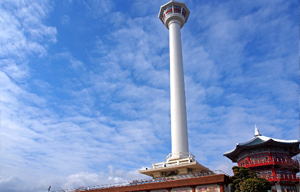
Yongdusan Park
Rising 49 meters above sea level in the middle of downtown, Yongdusan (Dragon Head Hill) forms a major landmark and offers a nice break from the concrete jungle of the city. From the Busan tower, which is situated in the middle of the park, one can enjoy a beautiful view all over Busan.Time : 5 walking minutes from Gukje & Jagalchi ; 30-45 minutes for the visit.
-
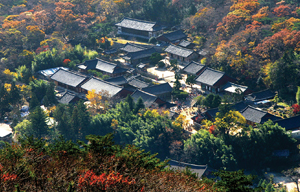
Beomeosa Temple
Beomeo Temple is located on the eastern slope of Geumjeon-san and is said to have been built in 678 A.D. by the Great Priest Uisang during the reign of King Munmu of the Silla Kingdom. It is one of the three largest temples in the southeastern part of Korea and one of the ten most famous ones of Korea's Hwaeom Sect of Buddhism. It was destroyed during the Japanese Invasion in 1592 and reconstructed in 1602 but shortly after burnt again by an accidental fire. In 1613 it was rebuilt again.Time : Around 40 minutes by car from the hotel ; 1-2 hour(s) for the visit.
-
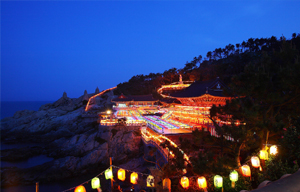
Haedong Yonggungsa (Temple)
Haedong Yonggungsa Temple is situated on the coast of the north-eastern portion of Busan. This superb find of a tourist spot and temple offers visitors the rare find of a temple along the shore line. On the right-hand side, inside the a cave, is a uniquely designed Buddhist sanctum, while situated just in front of the main sanctuary is a three-story pagoda with four lions. The four lions are symbolizing joy anger, sadness, and happiness. Other special sites at the temple are the 108 stairs and stone lanterns lining the rocky landscape. After going down the 108 steps, one will be delighted with the beauty of the temple. Midway down the 108 steps one can stop and enjoy the calming sounds of the waves as well view the majestic sunrise. Many people often come to this spot on New Year's Day to make a wish for the new year as they watch the sun come up.
-

Taejongdae
Taejondae is a park of dense evergreen trees with beautiful recreational facilities, including a seaside saltwater pool, snacks and souvenirs shops, and sightseeing boats to view the cliffs. At the entrance is a monument dedicated to the five neutral nations that contributed medical support during the Korean War (1950-1953). With its white lighthouse overlooking the sea, Taejongdae is one of the most popular tourist attractions in Busan, with lots of people eating fresh raw fish, taking a boat, or just enjoying the nice sea views.
-
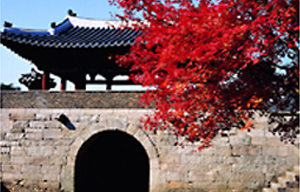
Mt. Geumjeong Fortress
Stretching 17km long and standing 1.5~5m high, this is the largest fortress in Korea. Magistrates Han Pae and Oh Han-won gave the fortress its present outlook. The mountain fortress also housed a villa for Dongnae Magistrate Yi Gyu-hyeon in 1824. This fortress became a national historic site in 1972 and a two-year restoration plan of the East, West, and South Gates was launched.
-

Gwangalli Beach
This beach is famous for its fine sand. There are also various restaurants specialized in raw fish.
-
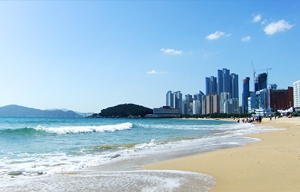
Haeundae Beach
Haeundae Beach is located in Haeundae-gu, Busan Metropolitan City, the Republic of Korea (South Korea). Along the 12km of coastline Haeundae Beach is Busan's most popular beach, and along with Seogwipo, is one of the best known beaches in South Korea. During the summer time, and especially on weekends, the area becomes a veritable wall of humanity with more than 100,000 people packed in on a narrow, one mile strip of sand.
-
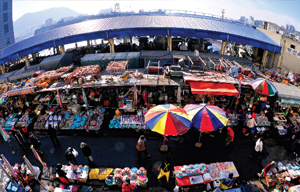
Jagalchi Market (Fish Market)
Jagalchi Market is the leading fish market in Korea and the largest fish market in Asia. With about a hundred years of history, Jagalchi Market has long offered a livelihood for those in Busan. Over time, it has grown into a must-stop destination for foreigners. In the market, there are fresh and dried fish as well as various necessities and food. The market is always filled with a dynamic energy, bustling with the lively sounds of vendors calling, fresh fish flopping, and customers haggling for the best price. More than a traditional fish market, Jagalchi embodies the history of the city as well as the joys and sorrows of its people. Going to the market is like getting inside the fast-beating heart of Busan.
-
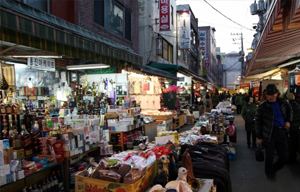
Gukje Market
Gukje Market is one of the largest markets in Korea. The marketplace was formed with a constant flow of the people who wanted to sell goods here after Korea’s independence. Once it was called dottaegi(disordered) market because people sold the smuggled goods here and there after the Korean war. It is the largest traditional market with diverse goods in Busan area. This market is one of the most famous tourist attractions where many overseas tourists would like to visit. It is also the ground for citizens’ lives.
